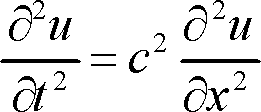Nicolas Bourbaki
Starting in 1935, the Paris based Nicolas Bourbaki started outputting a series of mathematical books titles the Elements of Mathematics (but in French). These started with the axioms of numbers and built up most of the main areas of mathematics in a very careful manner, with the aim of being the end all of analysis which university students of maths could consult.
Holistic projects like this were not new to maths. Around 300 BCE Euclid released a similar project (also called The Elements) in which he started with all of axioms of geometry and collected together all of the knowledge from the previous Greek geometers from the previous couple of centuries. It was presented in an order which presented each theorem and then proved it, referencing the results from previous theorems to build the next. This pattern of alternating theorem and then proof is the standard of modern textbooks, but Euclid’s Elements was the first and Bourbaki’s differed by being the gold standard of rigour and generalisation. Unfortunately by starting with such wide aims, the way that the maths is derived in Bourbaki is considered very abstract, to an extent where it is hard for an undergraduate to follow. But the approach was novel, producing lots of publishable breakthroughs.
On top of the Elements, Bourbaki penned many papers and articles for mathematical journals. In publication terms, Bourbaki had an extremely high output. However there was a reason for this: Nicolas Bourbaki wasn't a real person. Instead the name was chosen as the pseudonym for a collection of young* mathematicians based mainly in Paris. The membership was fluid, with nine founding members, but the collective managed to still be producing articles right up until the end of the 20th century.
Seven of the founding members
* This is young in mathematician terms. They were kicked out of the group when they hit 50.







